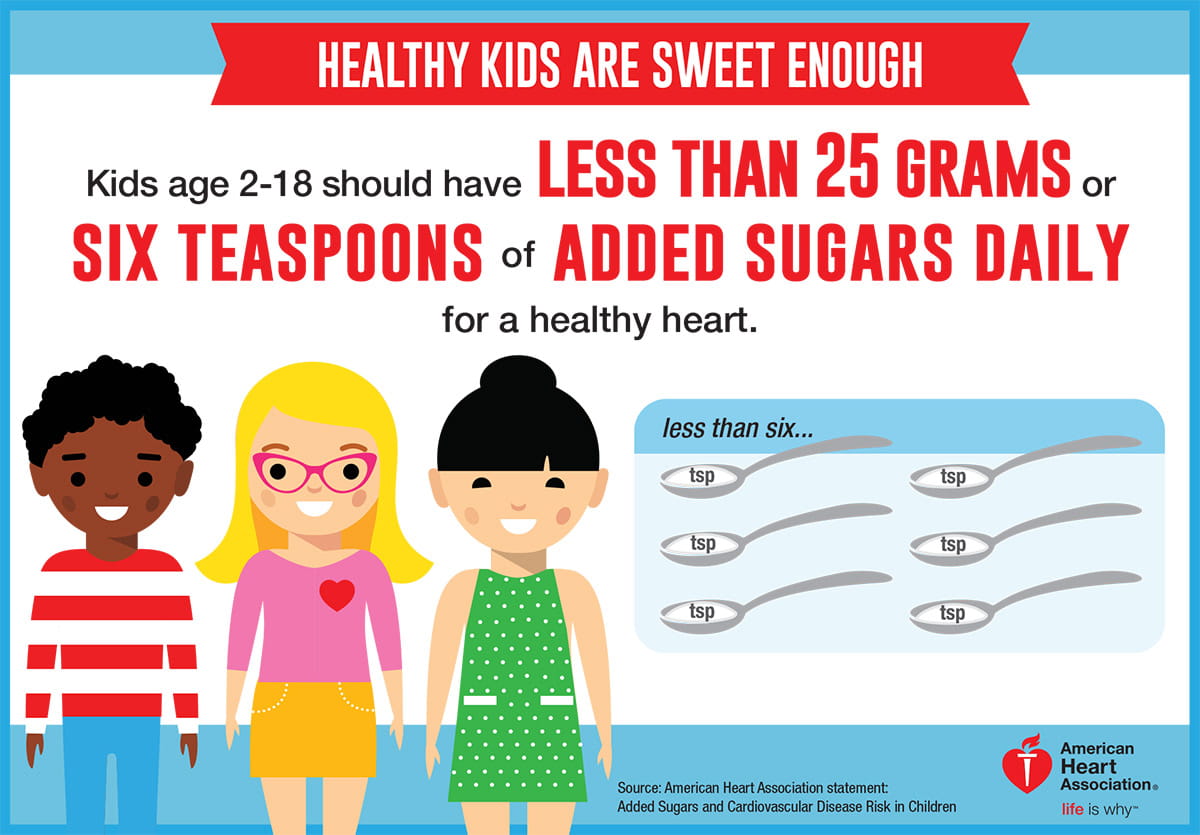Can Sugary Foods Increase the Risk of Heart Disease in Kids?
April 01, 2018
 University Hospitals Rainbow Babies & Children'sExperts in Children's Health
University Hospitals Rainbow Babies & Children'sExperts in Children's Health

Most of us love the taste of sugary food, and kids are no exception. But it's no secret that sugary foods are not the healthiest choices. Sugar adds calories to food without providing the nutrients your body needs. These are called “empty calories.”
“Studies show that a diet high in sugar can cause health problems, such as dental cavities, obesity and diabetes,” says pediatric cardiologist Daniel Pasternack, DO. “Experts also believe it may cause heart disease.”
Watch Out for Added Sugars
Added sugars are those that don’t naturally occur in foods. They are often used to make prepared or processed foods and drinks. The most common added sugars consumed by kids are found in soda, sports drinks, fruit-flavored drinks, cakes and cookies.
Guidelines on Sugar
The American Heart Association (AHA) recommends that:
- Children younger than 2 not consume any added sugar.
- Children older than 2 limit added sugar to no more than 25 grams a day. That’s about 6 teaspoons each day.
- Children and teens limit soda and other sugary drinks to just one 8-ounce serving a week.
Most kids need to cut back on their sugar intake. On average, U.S. children consume about 66 grams of added sugar a day. That amounts to over 53 pounds of added sugar per year.
How to Cut Back

Studies show that kids eat the most sugary foods at home, not while they're out. You can help your children cut back on sugar by following a few tips from Dr. Pasternack:
- Read labels and buy products with the lowest amounts of added sugars. Check labels on foods you buy to see if they contain sugar. You might be surprised at what you find. Sugar is added to many foods you might not expect, such as pasta sauce, ketchup, crackers and pizza. Keep in mind, ingredients are listed in order by quantity, so the higher sugar appears on the list, the more that product contains.
- Be aware of sugar’s other names. These include high-fructose corn syrup, sucrose, dextrose, maltose, molasses, cane sugar, corn sweetener, raw sugar, syrup, honey or fruit juice concentrates.
- Skip the soda. Try serving water or low-fat milk instead of soda or other sugary drinks.
- Choose fruit for dessert. Most kids love the taste of fresh fruit. You can also buy canned or frozen – just check the labels to make sure there’s no sugar added.
- Skip sugary cereals. Opt for unsweetened cereals instead, and add fruit to sweeten it.
Related Links
From diagnosis to treatment and recovery, our pediatric heart team provides comprehensive support and the care you depend on. Learn more about the Congenital Heart Collaborative at UH Rainbow. Learn more about childhood obesity care from UH Rainbow’s pediatric endocrinology team.


